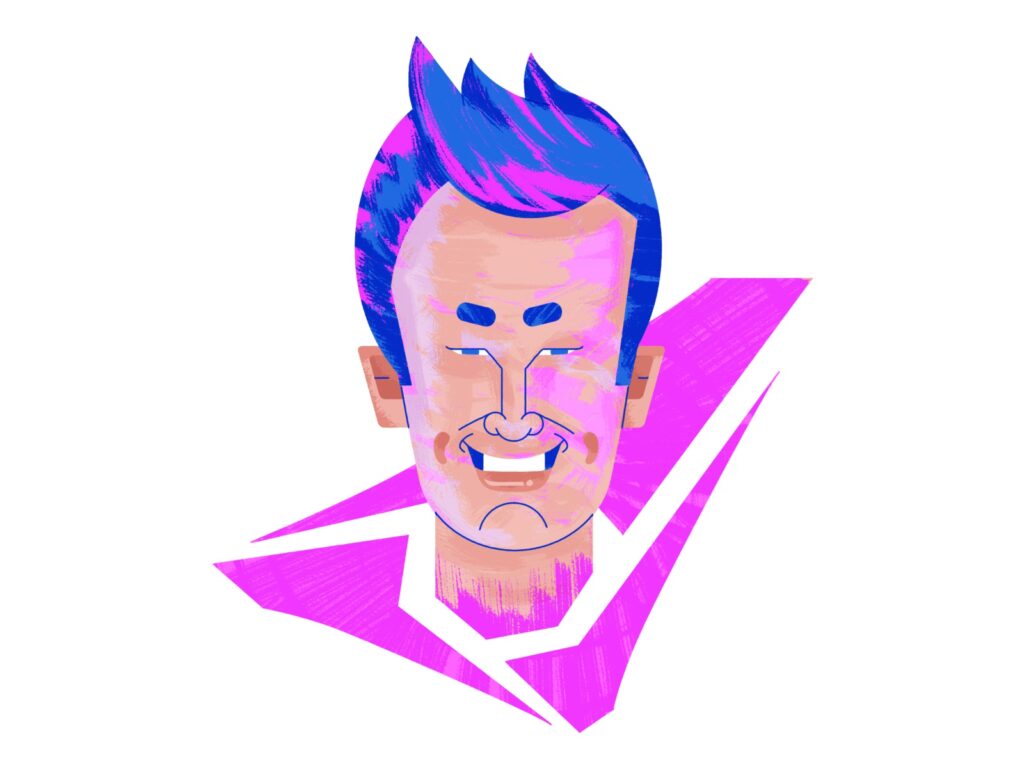I always say that I came to the illustration in a casual way . It is not something that I would have previously considered.
In fact, my academic training was directed towards graphic design. I studied Fine Arts but I was a bit lost and I didn’t know very well how to focus my professional future, so I did a Master in Art and Communication that allowed me to start working in agencies. That’s how I was for several years. She mostly did editorial layout and graphic design work.
I have always drawn, it is something that lives with me since childhood. Well, when we are little we all draw but there is a moment when we stop doing it (and why we stop drawing leads to another more extensive post). The fact is that I never stopped drawing, for me it was a wonderful way of expressing myself because I was always a little introverted and found a way of communication in drawing.
Once my last job was finished, I had two things: unemployment and time, so I started drawing more. Little by little I was publishing cartoons and comics (yes, comics!) In small fanzines. Then I opened a blog in which I was uploading my illustrations and little by little I began to think that illustration could be a great way to earn a living. I started assembling a portfolio and moving it around publishers. At the same time that I moved my work, I also began to make my products by hand, which little by little I began to sell online. And so we continue until now.
In my experience it is a long and slow process. I started more or less seriously in this about 2011. You have to have a lot of perseverance, patience, and support from your environment . Because it is a very unknown profession and not everyone understands it.
And now that I told you a little about how I entered this world, I would like to tell you what it is to be an illustrator.
What is it to be an illustrator?
“There is nothing that distinguishes the illustrator from any other plastic artist in
the sense of being a creator, but in the legal framework that implies the immediate destination
of the works for their reproduction. Labor speaking, it is more concerned with the
concept of commissioning a work , but it also develops projects that start
from their own discourse and are not subject to any prior text or formal commission
. ”
This is the definition of what the illustrator’s work is that FADIP does in its Illustration White Paper (if you want to be an illustrator and you don’t have the book you are already taking it. I leave the link below)
Therefore the illustrator is an author whose main purpose is to communicate .
We work with copyrights that we assign for an amount of money. It is how we earn bread. That is why it is very important to define the uses to be made of the illustrations we make.
Since the more exploitation of the illustration = the higher cost of it
The illustrator as author
As a general rule, illustrators (as we are authors) are partakers of the economic benefits generated by our works. You can agree on a lump sum (this means that we receive an amount x of money in exchange for doing work) and we also charge what we call copyright , which is a percentage that we obtain from profit for the books or other products that we have at the sale with our illustrations.
We have to be very clear about our rights, which we can group into two large groups:
- Moral rights : for the simple fact of creating a work. They are unique and non-transferable.
- Patrimonial rights: the author receives x economic benefit from the exploitation of his work. The economic rights are that of reproduction and distribution, public communication and transformation
If you want to dig a little deeper into this you can download the ILLUSTRATOR’S NINJA GUIDE .
The Illustrator Ninja Guide is a PUFA campaign that aims to bring practical information about the legal , professional and market aspects in which illustration develops.
